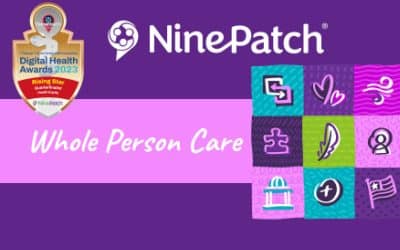
With new requirements on the horizon for social determinants of health assessment programs, it’s possible that health care, behavioral health, mental health, or community-based organizations might be wondering where to begin.
Or, if you are already screening for social determinants of health, you may have questions about patient or client consents, creating workflows to make, track, and close the loop on referrals, or how to link social and clinical data to document outcomes. Let’s begin with a brief review of recent CMS initiatives.
CMS SDOH and HRSN Initiatives
CMS support for social determinants of health assessment programs, also known as health related social needs, will be an ongoing focus in the coming years for payers and organizations providing Medicare and Medicaid services. Several initiatives including the Medicare IPPS System, Medicaid 1115 Waivers, and Medicare Advantage programs announced in 2022 offer specific steps for social determinants of health assessment programs.
These include:
1) The August 1, 2022 Final Rule to revise the Medicare IPPS system that confirmed two evidence-based measures to address health equity. These include screens for social drivers of health and screen positive rates for social drivers of health. Both are voluntary for reporting in 2023 and mandatory in 2024.
According to CMS, “We believe collecting patient level HRSN data through screening is essential in the long-term in encouraging meaningful collaboration between healthcare providers and community-based organizations and in implementing and evaluating related innovations in health and social care delivery.”
2) In the fall of 2022, the Centers for Medicare & Medicaid issued Medicaid 1115 waiver approvals for states to address health-related social needs.
3) Then on December 27, 2022, CMS Issued Proposed Rule 87 FR 79452 announcing guidelines to advance health equity in Medicare Advantage programs.
Identifying Social Determinants of Health Assessment Risk Tools
Depending on the level of organizational commitment and funding for social risk programs, providers may complete social determinants of health assessments through different methods. Community organizations may complete assessments on paper. Other organizations, social or clinical, may use EHR programs, care coordination, or referral software to complete and link SDOH assessment data.
When using technology to complete sdoh assessments, the responses can be collected and entered into fields into an EHR program, a screening program integrated into an EHR, in clinical notes, or in a care coordination program that supports assessments. Organizations may also use adaptations of existing screening tools from the Accountable Health Communities (AHC) model or PRAPARE when screening for social determinants of health.
Additionally, clinical or social care organizations may develop their own screening tools or incorporate these into care coordination and referral software programs like NinePatch® Whole Person Care. Screening for a combination of risk factors can lead to identifying a broader range of health care risks or social needs which can lead to better outcomes and better health for beneficiaries.
The screening assessments may include questions about being connected to a religious community, substance abuse disorders, mental health, transportation, housing, family support, or social isolation. Providers, like EMS, home based health services, disaster services and others may develop social determinants of health assessments specific to the services they provide.
Performing a Social Determinants of Health Assessment
Performing a social determinants of health assessment may come naturally or the assessment process may feel awkward. Providers and the individuals potentially receiving services may have different comfort levels when discussing social need concerns.
Providers may worry about maintaining patient privacy and obtaining consents. Asking personal questions may feel intrusive especially when meeting an individual for the first time. Providers may be concerned about the action to take when an identified need has no link to an available resource or service.
On the other hand, vulnerable persons may have concerns about disclosing financial, work, or other information to providers. Some individuals may be reluctant to seek help due to shame or stigma about needing help.
Additionally, both providers and individuals may be concerned about the difficulty in referring to or following up to access government programs. Many programs have wait lists or long wait times on-site for an appointment. Requirements may exist to appear in person to apply for benefits. And even after an application is approved it can be disheartening to learn that the assistance may not meet patient or client needs.
To be successful in delivering positive outcomes, providers and the staff of social care organizations must develop plans and systems to address these concerns. .
Establishing Staffing Needs to Assess Health Related Social Needs (HRSNs)
The link between social determinants of health and clinical health is well established. Allocating time to complete assessments and identifying staff to complete them is part of the process to establish integrated HRSN workflows. Coders also must learn how to extract billable information from patient records to create reimbursement claims.
A recent survey by AHIMA (American Health Information Management Association) and NORC identified roles within healthcare organizations that collect and use SDOH data. These include:
- Coding professionals 68%
- Case management 48%
- Clinicians 47%
- Registration or patient financial services 37%
In community based organizations, also known as social care organizations, the individuals most likely to assess are program managers, social workers, or in-home care workers.
Developing Workflows to Assess Social Determinants of Health
Collaborative efforts to assess, make referrals, and close the referral loop to ensure patients and clients receive supportive services can deliver success for SDOH and HRSN efforts.
According to Research by Beidler et. al, in the Journal of Internal Medicine, interviews with administrators at US healthcare organizations provided valuable insights regarding challenges when trying to implement the ideal referral program. These include:
- Developing and maintaining resource lists
- Aligning referrals with patient needs
- Measuring the efficacy of referrals
Buy-in to use care coordination and referral platforms by users is a critical step for clinical and social care organizations. Interoperability between disparate platforms and EHR integrations can be another barrier to solve if clicking in and out of programs is required. Convener efforts to align goals with local organizations and gain user adoption are requirements for success.
The ability to close the loop on clinical and social referrals by having access to a consistent and trustworthy network of providers reduces health and social care worker stress. Interoperable software platforms can confirm who is caring for patients and clients to eliminate guesswork about the status of an in or out-of- network referral.
And last, but not least, measuring outcomes requires participation between community-based and clinical organizations. Community organizations who enter sdoh assessment data that connects with Z-codes and relates to ICD-10 and CPT codes can support reimbursement.
Clinical organizations who health related social needs programs can invest in and share software platforms with social care organizations. By creating systems for cross collaboration and data sharing everyone, including patients and clients, benefits.
NinePatch® SDOH Solutions
NinePatch SDOH solutions are the answer to CMS rules and initiatives that support social determinant of health assessment programs. Whole Person Care was developed with a Health Information Exchange (HIE), patients, and consumers in mind. The program features help organizations succeed in developing and implementing SDOH programs.
Additionally, RIE™ solves interoperability concerns between disparate clinical and social organization platforms. The exchange of data eliminates the need for paper or fax referrals.
So, whether you are currently implementing a social determinants of health screening program and have questions or if you would like to learn more about establishing a program, schedule a NinePatch Demo today.
Stay Up To Date
NinePatch® Recognized as Quarterfinalist for the Digital Health Hub Foundation: Digital Health Awards
NinePatch is a Rising Star in the Health Equity Track KNOXVILLE,...
SDOH and Care Coordination Programs and Funding
SDOH care coordination and funding is available from federal, state,...
Whole Person Healthcare Model Insights and Opportunities
A whole person healthcare model combines physical, behavioral, and...




